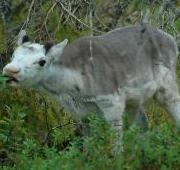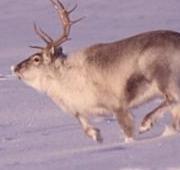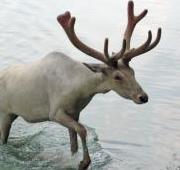 The reindeer (also known as the caribou) is found in large herds in the very north of the world. Reindeer inhabit both the Arctic Tundra and the North Pole regions which include parts of North America, Europe and Asia.
The reindeer (also known as the caribou) is found in large herds in the very north of the world. Reindeer inhabit both the Arctic Tundra and the North Pole regions which include parts of North America, Europe and Asia. The reindeers hooves adapt to the season so in the summer when the tundra is soft and wet, the reindeers footpads become sponge-like in order to get a bigger surface area on the damp group. In the winter, the reindeers footpads shrink and tighten, exposing the rim of the hoof which cuts into the ice and crusted snow to stop the reindeer from slipping.
The reindeers hooves adapt to the season so in the summer when the tundra is soft and wet, the reindeers footpads become sponge-like in order to get a bigger surface area on the damp group. In the winter, the reindeers footpads shrink and tighten, exposing the rim of the hoof which cuts into the ice and crusted snow to stop the reindeer from slipping.


The reindeer travels the furthest of any land mammal with these migrations often containing thousands of reindeer. The caribou of North America can run at speeds up to 50 mph and can travel as many as 3,000 miles a year.The most extensive migrations occur in spring and fall. The largest reindeer migrations take place in the spring and autumn when the reindeer are hungry and in search of food.
The reindeer is often an attempted target for the large predators that exist in the Arctic Circle but the reindeer is very fast and moves in enormous groups so the reindeer is not easy to catch. Arctic wolves, polar bears, brown bears, humans and the occasional shark are amongst those animals that hunt the reindeer.

